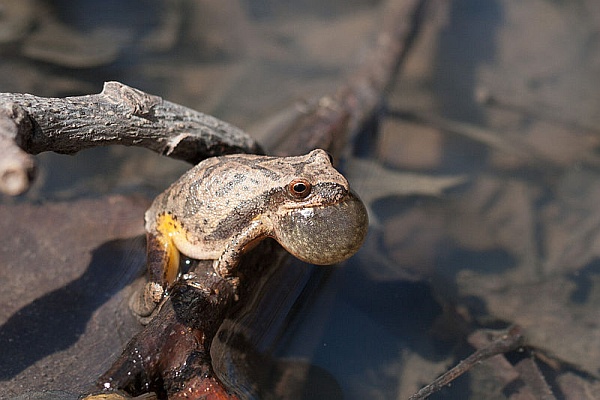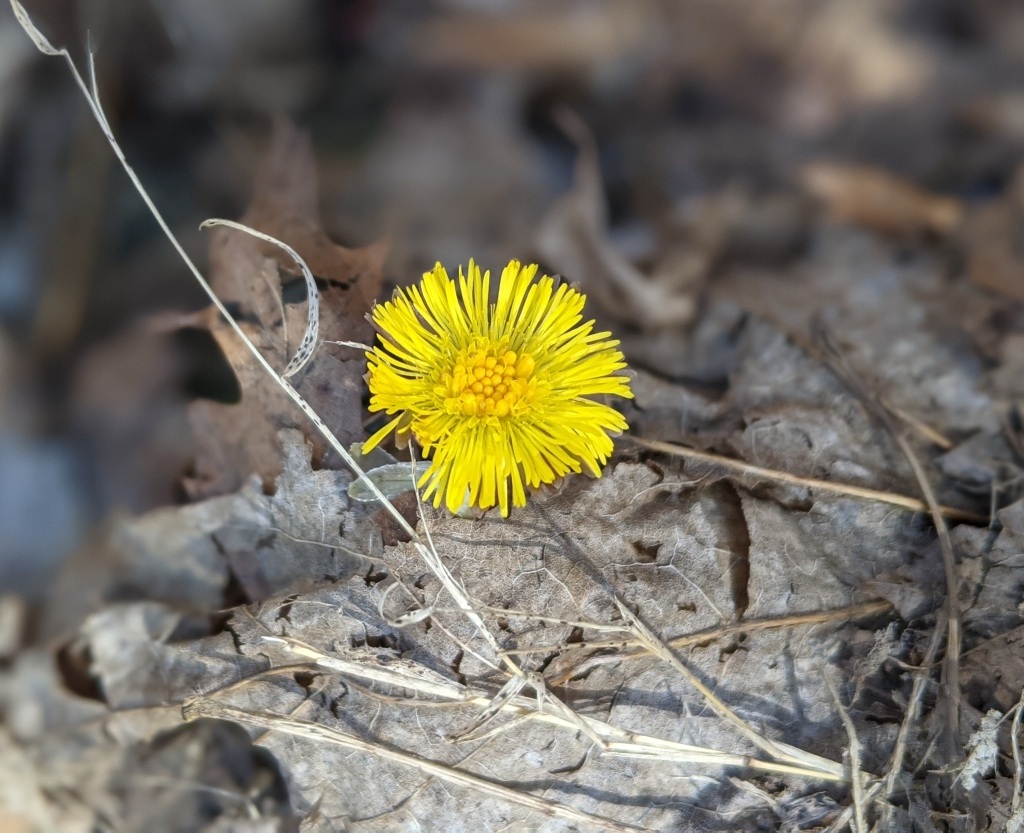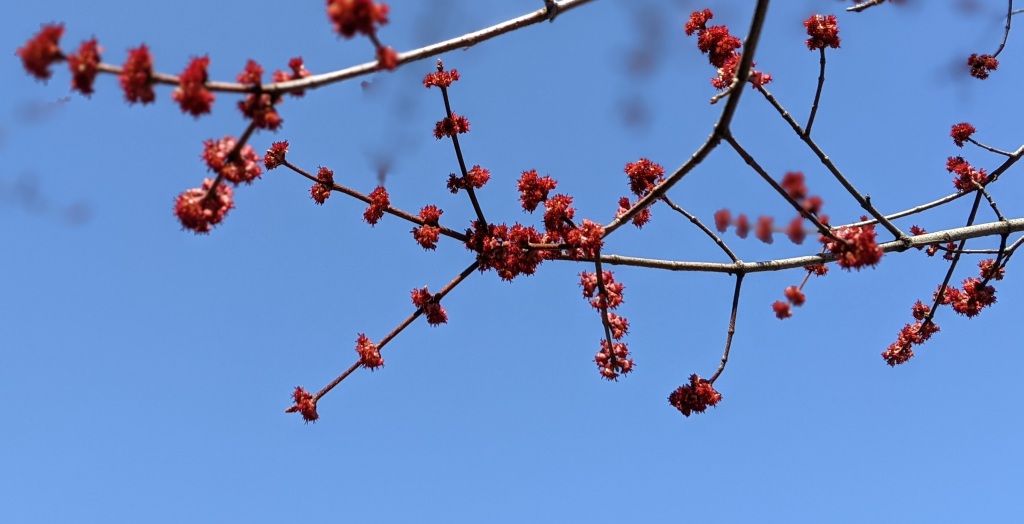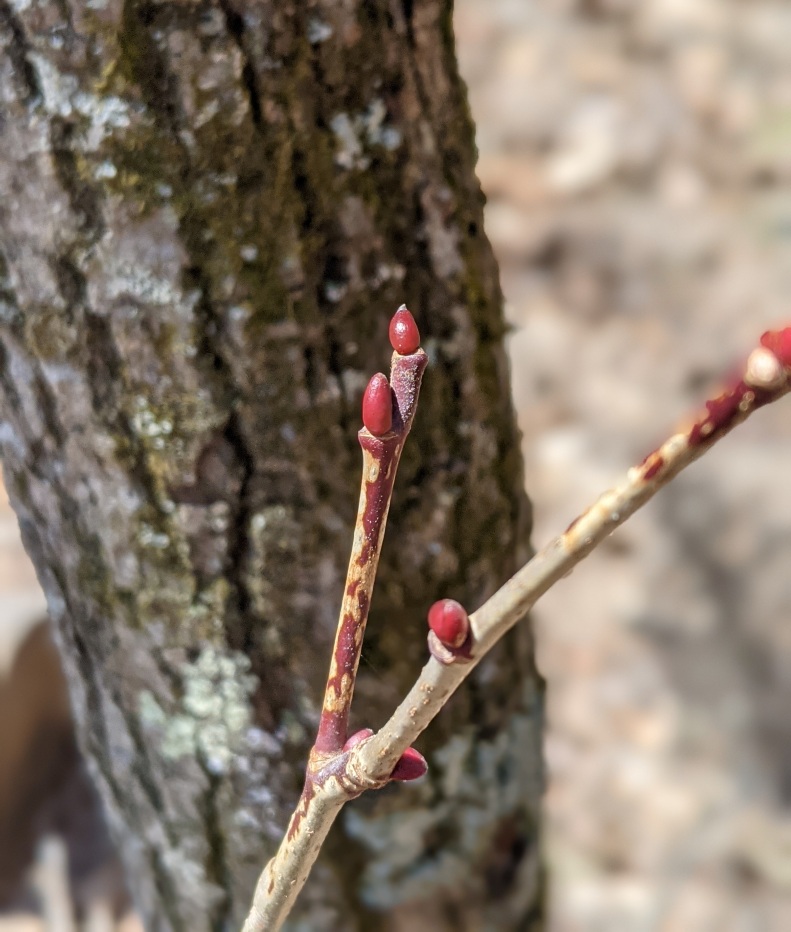
10 April 2021
This week Pittsburgh’s sugar maples are clothed in spring green flowers while the oaks remain bare. Most trees bloom long before leaf out so their leaves won’t block the pollinators. These flowers take full advantage of the wind.

Did your allergies kick in this week? The trees are throwing off lots of pollen with little rain to lay the dust.
Insect-pollinated flowers will follow soon. On 3 April pawpaw flowers (Asimina triloba) were still tiny buds in Schenley Park but by the time they bloom the stems will be long and flexible. The dark maroon fetid-smelling flowers will hang like bells to attract flies and beetles. Click here to see a pawpaw flower.

Eastern redbud flowers (Cercis canadensis) had not opened in Schenley as of 7 April, but they showed promise.

Spring cress (Cardamine bulbosa) was blooming at Raccoon Wildflower Reserve on Easter Day.

And Virginia bluebells (Mertensia virginica) were open in Schenley Park on 9 April.

This winter I noticed that when moss grows up the base of saplings it looks like leggings on the trees. At Raccoon Wildflower Reserve I found an entire group of saplings wearing mossy leggings. Click here to see the whole group. (Anyone know what this mossy phenomenon is?)
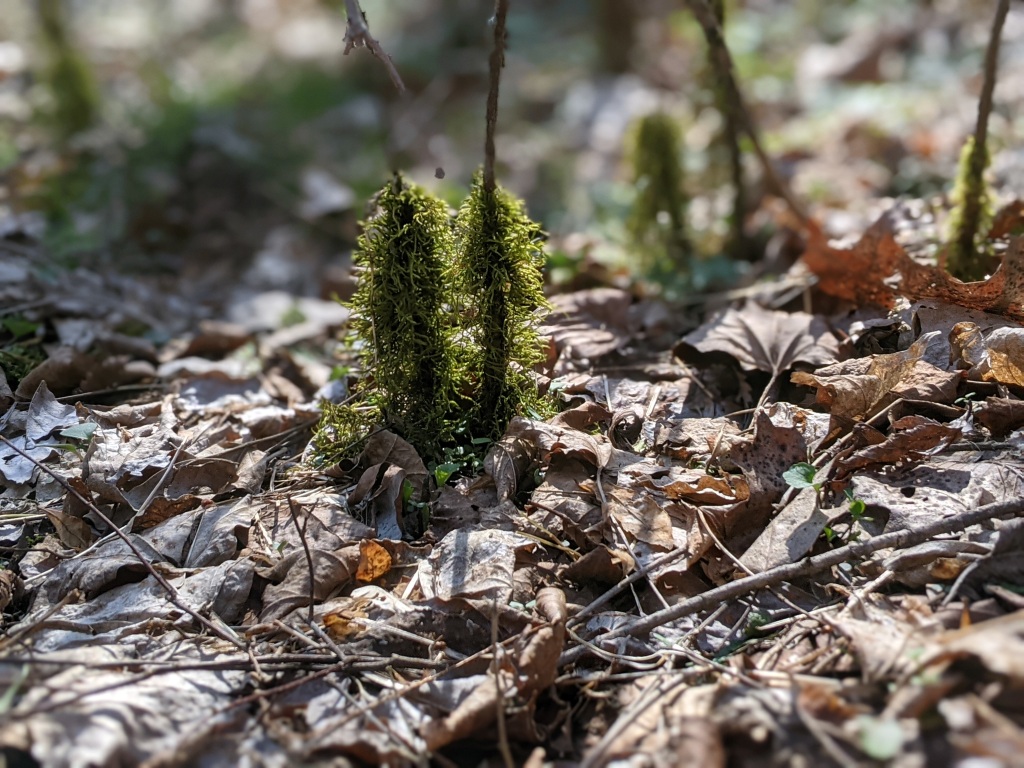
Spring green will continue in the coming weeks as tiny leaves pop open and more trees bloom.
(photos by Kate St. John)

